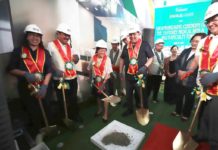
[av_one_full first min_height=” vertical_alignment=” space=” custom_margin=” margin=’0px’ padding=’0px’ border=” border_color=” radius=’0px’ background_color=” src=” background_position=’top left’ background_repeat=’no-repeat’ animation=”]
[av_heading heading=’Wastewater causes algal blooms in Boracay – DENR ‘ tag=’h3′ style=’blockquote modern-quote’ size=” subheading_active=’subheading_below’ subheading_size=’15’ padding=’10’ color=” custom_font=”]
BY GLENDA SOLOGASTOA and PRINCE GOLEZ
[/av_heading]
[av_textblock size=” font_color=’custom’ color=”]
Thursday, March 9, 2017
[/av_textblock]
[av_textblock size=” font_color=” color=”]
ILOILO City – Untreated wastewater is causing algal blooms in Boracay Island, a research of the Department of Environment and Natural Resources (DENR) Region 6 last year showed.
It was a repeat of a previous research that had similar results, said Regional Director Jim Sampulna yesterday.
The recurring appearance of green algae in Boracay’s otherwise white-sand beach has raised concern on the safety of tourists and the island’s ecological health.
Algae is attracted to untreated wastewater, said Sampulna.
He specifically cited soap and detergents in untreated wastewater produced by informal settlers and being flushed out to the sea.
Sampulna did not discount the possibility that some establishments and residences may be dumping untreated wastewater into the sea.
The other day, Department of Tourism (DOT) regional director Helen Catalbas said she wasn’t sure if untreated wastewater was behind the recurrence of green algae in Boracay, the country’s top tourist destination.
Some residences and commercial establishments may not be connected with the Boracay Island Water Company (BIWC) partially owned by the DOT-Tourism Infrastructure and Enterprise Zone Authority and a private corporation.
Wastewater should first be treated at BIWC’s sewerage treatment plant before it is released to the sea.
“I do not know. I cannot say for sure kun bala ang mga lumot has something to do sa mga wala nag-tap sa BIWC pipes,” said Catalbas.
DENR is in a better position to explain, she said.
Sampulna said the Environmental Management Bureau (EMB), an attached agency of the DENR, will check this out.
Violators may be held liable, he added.
The director, however, said that as far as big establishments in Boracay are concerned, most have wastewater treatment facilities.
“There’s a problem with informal settlers. They have no such facility,” said Sampulna.
During the months of February to May each year, water in some areas of Boracay appears green.
According to the Boracay Foundation, Inc., this is due to the seasonal bloom of green algae.
This phenomenon had been observed by the locals even before Boracay became a prime destination flocked by tourists and crowded with development, it stressed.
“Scientifically, green algal bloom is linked to the high nutrient load of the water. Usually with calm and warm waters, coupled with intense light during summer, these green algae consume excess nutrients from the water and process it for their growth and reproduction. In fact this equates to their proliferation…The presence of these algae is nature’s way of balancing the problem of high nutrient content in the water,” read part of the brochure prepared by the foundation specifically made to address concerns over Boracay’s green algae.
Catalbas said DOT has not seen signs that tourist arrivals in Boracay declined despite the yearly algal phenomenon.
The department recorded 169,843 arrivals in January and 174,183 in February – higher than the 158,701 arrivals in January last year and 173,256 arrivals in February of the same year.
An online news site, however, recently quoted one disappointed tourist: “First time ko talaga dito sa Boracay. Ine-expect ko talagang makita ‘yung blue water. Pero nagulat ako nang makita ko ‘yung lumot…Isang beses lang ako naligo. Hindi na ako bumalik. Personally, tingin ko lang, madumi.”
Meanwhile, Sen. Nancy Binay sought a Senate investigation into the algal bloom and even the alleged rise of coliform bacteria in Boracay’s waters.
The Senate tourism committee chairwoman believes the inquiry is “imperative” to “update and reform environmental laws.”
The increasing presence of algae in the world-famous island resort may be attributed to the upsurge in human population and the lack of sewage treatment plants, she stated in Senate Resolution No. 313.
Tourism-related activities cause coral reefs in Boracay to deteriorate, Binay said, citing the Japan International Cooperation Agency’s 2010-2015 Coastal Ecosystem Conservation and Adaptive Management Project, among other reports.
Earlier, Tourism secretary Wanda Corazon Teo said she expected more tourists visiting the Philippines this year but warned that the surge could consequently lead to an increase in the amount of waste produced.
“Despite the presence of environmental laws and measures, the threats of inefficient waste management to the environment, especially tourist destinations in the country, still persist,” Binay said./PN
[/av_textblock]
[/av_one_full]



